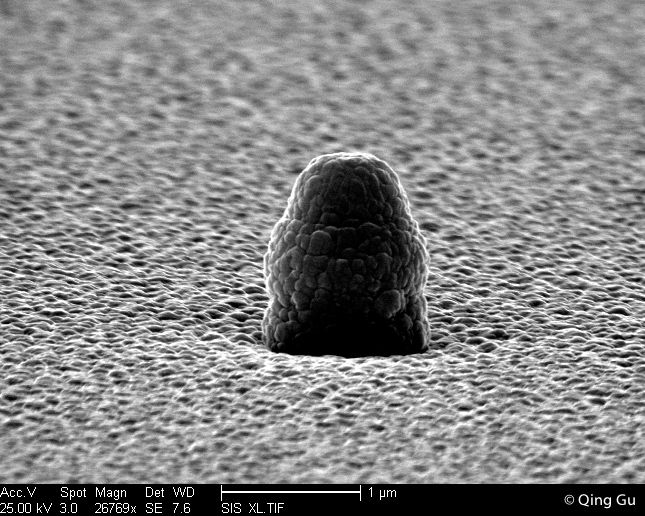(Untitled)

Like a tiny shiny mountain, this nanolaser and the area around it is coated in a layer of blobby silver. The silver serves as a mirror that keeps the laser light bouncing around inside the laser’s light-amplifying interior, generating more and more copies of itself. A tiny percentage of the laser light leaks out the bottom, and each photon of light that escapes is a nearly-identical copy - same wavelength, same direction, same phase. It’s the phase in particular that distinguishes laser light from regular light - its coherence, in other words.
Adding the metal coating is one of the last steps in making our nanolasers, and it takes place in a machine called the sputterer - which gives a mental picture of how the metal layer ends up blobby. They’re small blobs, though, about 100 nanometers across, or the size of a largish virus. The entire laser will end up about the size of a single red blood cell.
Laser made and electron microscope image taken by Qing Gu


